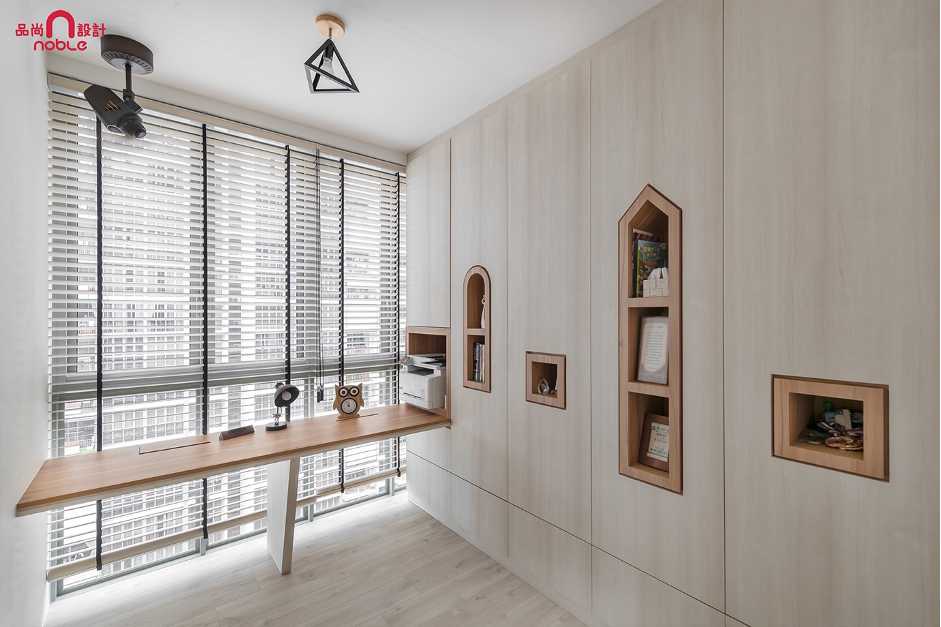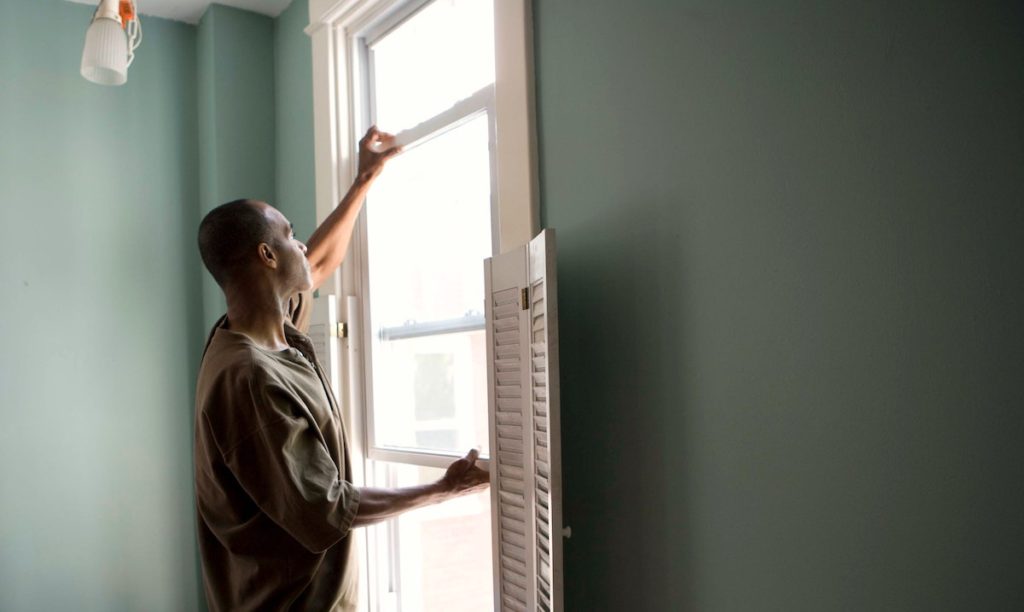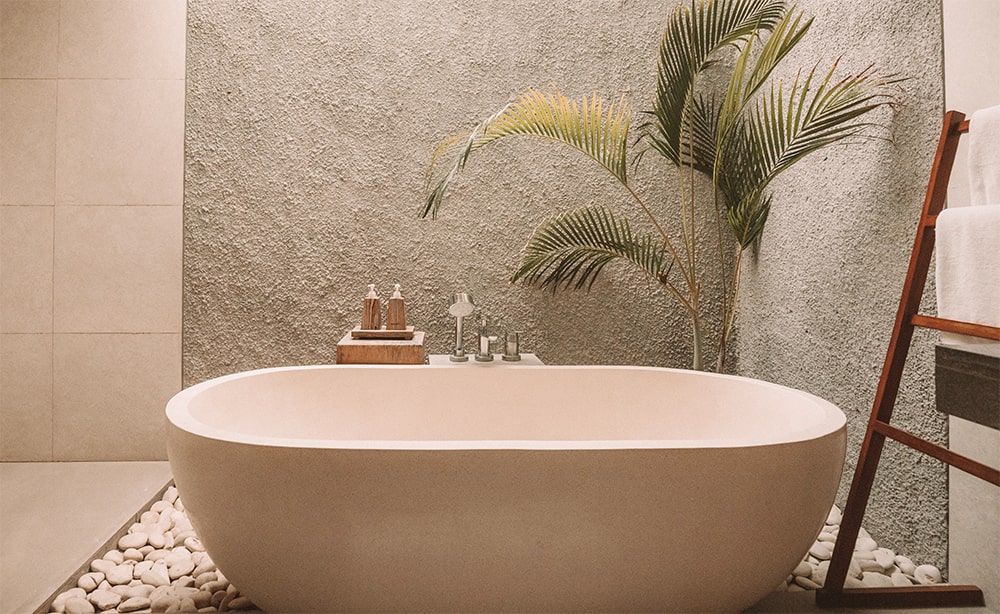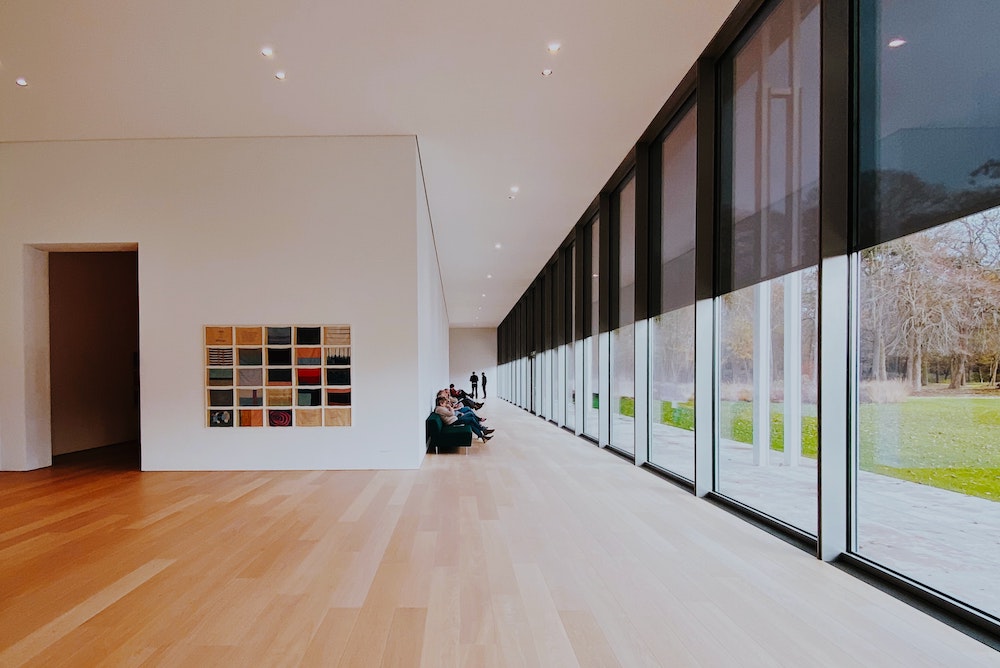
Homees provides a directory of laminate flooring companies in Singapore. You can compare and view a list of laminate flooring companies that can suit your home needs.
Laminate Flooring Cost & Estimation Calculator (in Singapore, 2024)
Still unsure how much it will cost you to install laminate flooring? Find out now by using our renovation calculator!
(This calculator is in beta-phase and is only an estimate)
11 Best Laminate Flooring Contractors In Singapore (Our Top Picks)
Companies | Services | Where to find | Ratings |
Homees Concierge Service | Homees Concierge Service Team - tell us what you need and we'll help get it solved. Talk to us today by giving us a call or Whatsapp us now. | 994 Bendemeer #03-04 Singapore 339943 | Average Rating: 5/5 |
NBL Express - Eco Flooring Pte Ltd | Indoor Flooring - Premium Resilient Flooring (PRF™) - (PRF 7.5™)
- EvaLAST / EcoDECK / EasyDECK | 536 Balestier Road Singapore 329861 | Average Rating: 5/5 |
Reno Guys Pte Ltd Visit | - Interior Design - Laminate Flooring Packages - Vinyl Flooring Packages | 71 Woodlands Ave 10 Woodlands Industrial Xchange #07-18 Singapore 737743 | Average Rating: 5/5 |
Vohringer Laminate & Vinyl Flooring | - Laminate Wood flooring | Blk. 3014A, Ubi Road 1, #06-09 Singapore 408703 | Average Rating: 5/5 |
Paramount Construction | Tiling Contractor | 2 Yishun industrial st 1 North Point Bizhub #08-14 Singapore 768159 | Average Rating: 5/5 |
Goodhill Flooring & Decking | Flooring - Durafloor | 9 Sungei Kadut Street 5 Singapore 728956 | Average Rating: 5/5 |
Laflor Living | - Vinyl Flooring - Linoleum Flooring - Carpet - Sports Floor - Wet Works, Tiling and Epoxy | 261 Kaki Bukit Ave 1 Shun Li Industrial Park Singapore 416065 | Average Rating: 5/5 |
Floor Deck Specialist Pte Ltd | - Vinyl flooring | 50 Tagore Lane, #05-01A Entrepreneur Centre, Singapore 787494 | Average Rating: 5/5 |
PolyDeck | - EVO3 | 28 Tech Park Crescent Singapore 638104 | Average Rating: 5/5 |
Floor Master | - Tiling flooring Polishing | 75A Killiney Rd, #02-04 Singapore 239529 | Average Rating: 5/5 |
Ecopluz Pte Ltd | - Installation of Vinyl Flooring | #01-39 Enterprise One 1 Kaki Bukit Road 1 Singapore 415934 | Average Rating: 5/5 |
Goodrich Global | - Wallcovering | 8 Changi South Lane, #01-01 Goodrich Building Singapore 486113 | Average Rating: 5/5 |
Hire Laminate Flooring Services In Singapore
View All Laminate Flooring Companies
Find Laminate Flooring Services
How Much Does It Cost To Install Laminate Flooring In Singapore?
Type of Flooring | Estimated Cost | Remarks |
Laminate Flooring | Underlayment installation: $0.25 to $0.70 psf | - Mostly 8mm thickness for planks but ranges between 6mm to 12mm.
|
Material Cost
In Singapore, it normally costs between S$2.80 to S$8 per square foot. This ultimately depends on the thickness of the flooring and its grade/ quality
Other Cost
Other costs that may affect your total installation cost of laminate flooring include labor cost, cost of supplies and equipment, and old floor removal.
Do you want the timeless beauty and elegance of a wooden floor but don’t have the required budget? If so, laminate flooring might be a great choice for you.
Since the flooring of a house sets the foundation on which the other elements of the interior design come in, you would want it to be the best.
A pure hardwood floor can be expensive and not affordable to all. This is where laminate may provide a cheaper alternative!
What Is Laminate Flooring?
Laminate flooring is made up of synthetic material and it is an attractive and durable type of floor that imitates wood beautifully.
Laminate flooring comes in the form of planks or tiles, and they do not need to be glued to the ground like vinyl flooring. Instead, they are made up of a tongue and groove mechanism through which they can snap together. You can easily install it on any type of floor. Surprisingly, laminate floorings are also a popular choice for commercial places. This is because of its low maintenance and its resistance against abrasions that can often be caused by high foot traffic.
It is made from composite wood pressed together at high temperatures to achieve a stable and strong core. A hardwood image is then embossed on the top to give the flooring its unique and distinguishable wood-like look.
With improvements in research and processes, laminate floors have evolved with deeper embossing and sharper high-definition images. This includes using micro bevels, deeper texturing, and better graphics reproduction to create better-quality laminate floors with increased durability.
Depending on the quality of the laminate floor installed, the life expectancy is expected to be approximately 25 years and above if properly maintained.
Different Types of Laminate Flooring and Finishes
It is good to note that generally, there are many grades and ratings for laminate floorings, from AC1 to AC5. AC1 and 2 are usually recommended for housing areas and those after that are usually meant for commercial settings. The scale is based on its ability to withstand scratches, stains, and many other forms of damage.
Apart from the grade, the visual aesthetic of your house can be influenced by the many texture types this flooring has to offer:
- Smooth/satin: this provides a softer feel and it does not have a very textured feel
- Handscraped: this type would have a similar feel to that of hardwood or real wood, giving it a more organic visual
- Brushed: this texture and visual aesthetic are achieved when a metal wire is used to brush against it.
- High-gloss: this type provides a glossy and textureless aesthetic
How To Install Laminate Flooring
Installing a laminate floor is quite manageable if you take care of a few things. You can easily do it yourself without the hassle of researching for professional help. However, there are specific important pointers that need to be considered to make sure that the flooring is laid out appropriately.
Since there is no need for glues or nails for installation, this further adds to the convenience of its installation. The laminate tiles snap together to cover the desired area. All you would need is a simple saw to cut the tiles to fit the room dimensions.
The process of installing a laminate floor is described in the following steps:
- Prepare and clean the floor. Laminate flooring can be installed on all kinds of floors; it just needs to be clean and smooth.
- Test out the layout of the tiles on the floor so you can have an idea of where everything will go. The horizontal and vertical placement of the tiles is determined by laying them on the ground. Once you know the rough layout, you can pick up the tiles and move on to the next step.
- Cut the planks with a saw according to the room dimensions. The laminate planks are very thin and can be cut easily with any type of saw.
- An underlayment of foam sheeting is installed as a base layer. This underlayment helps in absorbing sound and makes it easier to walk on the floor. The foam layer is needed in creating a thermal barrier against extreme temperatures. You can roll out the underlayment and cut it to fit the room. The foam layer can be glued to the ground through the peel-and-stick adhesive edges.
- Install the first row, which should be parallel to the longest wall or focal point of the room. Since laminate flooring expands and contracts according to the temperature, you should leave a space of 1/4-inch along the wall before installing the first row. For consistent gaps along the first row, use spacers.
- Align the tongue sides of the planks facing the wall and place the whole first row on the floor.
- Place the second row with their tongues along the grooves of the first row and snap them together in place. This process is continued for all the remaining rows until the complete floor has been laid out.
- Remove the spacers and add a matching threshold and quarter-round moulding to the walls using finishing nails to complete the installation process.
Common Mistakes to Avoid When Installing Laminate Flooring
- Not Preparing the Subfloor: One of the most common mistakes when installing laminate flooring is not properly preparing the subfloor. Before installation, the subfloor needs to be clean, dry and even. Uneven or dirty subfloors can cause the laminate flooring to buckle or shift over time.
- Incorrect Underlayment: As mentioned above, underlayment provides moisture barrier, and sound insulation, and helps to even out small imperfections in the subfloor. If you’re using the wrong underlayment, or worse, not using it at all, your laminate flooring will have issues in the future.
- Incorrect Expansion Gap: Laminate flooring expands and contracts due to temperature and humidity in the room. If it is installed too tightly against walls, the flooring can buckle. As such, we recommended leaving a 1/4-inch expansion gap around the perimeter of the room.
- Poor Quality or Incorrect Type of Laminate: Choosing poor quality or the incorrect type of laminate flooring can cause issues such as scratches, buckling, or fading.
- Not Following Manufacturer Instructions: Each laminate flooring manufacturer has their own installation method. Thus, you’ll have to follow the instructions carefully to avoid possible issues with the flooring.
Pros And Cons Of Laminate Flooring
Pros
- Available in a variety of colours, designs, and texture options.
- It mimics the look of a wooden floor, but when compared with its cost. It is cheaper than wood flooring.
- Easy to install as it is available in peel and stick form. It is also available in the form of a floating floor through the tongue and locks groove system.
- It is primarily made from natural materials which make it biodegradable and environmentally friendly because of its natural composition, it is unlikely to cause allergic reactions.
It is easy to clean and maintain as the top layer of the laminate flooring is stain resistant. There is no need for you to wax, polish, or varnish your floors to keep their appearance and because of this, simple cleanings such as dry cleaning or moping the floor will suffice in protecting the floor from dirt and dust.
Find Laminate Flooring Services
Cons
- May appear plastic and fake at a careful glance.
- Laminate flooring is not completely water-proof, especially the lower layers, which can get damaged from moisture, humidity, and water. The uppermost layer also can get damaged by water or other liquid spills if it is not cleared immediately.
- It is quite hard and can be uncomfortable to walk on. They also cause a lot of noise while walking.
- Easily scratched with pointy objects and pet claws.
- Once damaged, laminate tiles or sheets will have to be replaced since there is no way you can repair them.
- The wear layer tends to wear out with time after which the entire laminate sheet will have to be replaced. There is no way you can sand it or polish it like wood.
- It can potentially discolour over time. This is especially so in hot and humid weather, where the strong sunlight emitting UV rays may lead to the discolouration of the floor.
How To Clean And Maintain Laminate Flooring
There are a few easy cleaning and maintenance tips that you can adopt to ensure that your laminate floor remains spick and span. These cleaning and maintenance tips are described below:
- The floor should be swept on a regular basis with a soft broom or brush to remove built-up debris.
- Every week or so, vacuum the laminate floor for deeper cleaning. However, the soft brush attachment of the vacuum cleaner should be used to prevent any scratches.
- Since water can permanently damage the laminate floor, it should be used minimally during cleaning. You can wipe the floor with a damp cloth once a month or once every two months.
- After mopping, use a dry cloth to ensure there is no remaining moisture from the floor.
- Use special cleaning solutions that are specifically manufactured for laminate floors.
- You should avoid any oil-based or wax cleaners as they can fade the colour of the laminate floor. They may leave stains and marks which would be impossible to get rid of.
- You can even make a mild cleaning solution by mixing a small amount of liquid detergent or soap with a gallon of water. Using a cloth dampened in this solution, you can clean the floor. But make sure to completely dry the floor and not to leave moisture on it.
- Remove moisture or other spills promptly, as the liquid can cause the wood of the laminate floor to bubble or swell.
- For oily or greasy stains, freeze the stain by using an ice pack. Once frozen, scrape it off using a plastic scraper to avoid damaging the floor. Use a dampened cloth to wipe off the area.
- You can remove coloured stains using acetone solution. Damp a soft cloth with the solution and wipe off the stain until it is removed completely. Follow it with a dry cloth to remove moisture.
- Avoid using any strong, acidic cleaners or solutions on the laminate floor as it can permanently fade its colour and shine.
- Place flat floor protectors underneath all kinds of furniture, so they don’t scratch the floor. Also, avoid sliding heavy objects on the floor as it can cause permanent scratches and marks.
- Keep the pets’ nails trimmed at all times to prevent them from scratching the floors.
By following the above simple maintenance techniques, you can make sure that your laminate floor can last for a long time. Laminate floors allow you to get the classy and elegant look of a hardwood floor but at a much more affordable rate.
With careful usage, you can ensure that the laminate floor continues to provide your home with the same elegance and style for years.
If you have laminate flooring in your home, you may occasionally need to have it repaired due to damage or wear and tear. While some small repairs can be done on your own, larger or more complex repairs may require the help of a professional flooring repair company.
To find a reliable and experienced flooring repair company, you can check out Homees’ directory of local service providers. These companies specialize in repairing all types of flooring, including laminate, and can help with issues like scratches, chips, or water damage.
How to Maximise Savings on Laminate Flooring?
- Install it yourself: You can make it your own DIY project and save your money by installing the laminate flooring yourself.
- Proper maintenance: Maintaining your laminate flooring properly can extend its life and save you money in the long run. You can do so by cleaning up spills immediately, using proper cleaning products and refraining from dragging heavy objects across the floor.
- Protect your floors: Furniture pads, area rugs and door mats are helping ways to protect your laminate flooring from scratches and damages.
Questions to Ask Professionals About Laminate Flooring
When considering laminate flooring for your home, asking the right questions can help ensure that you’re getting the right product and installation service. Here are some questions to ask professionals about laminate flooring:
- What type of laminate flooring do you recommend for my home? High-pressure laminate (HPL) and direct-pressure laminate (DPL) are some of the different laminate floorings offered by most companies. The professional can recommend suitable flooring based on your budget, lifestyle, and aesthetics.
- What is the installation process for laminate flooring? Ask about the installation process such as how they prepare the subfloor, the type of underlayment used, and how they leave expansion gaps.
- How long does the installation take? The estimated installation timeline provided by the professional can help you to plan accordingly.
- What is the warranty for the laminate flooring? Ask about the warranty for the laminate flooring product, such as the length of the warranty, what it covers, and any exclusions.
- How do I maintain my laminate flooring? Ask how you can clean and maintain your laminate flooring, and any recommended cleaning products and techniques.
- What is the cost of the installation, and if are there any additional fees? Get a detailed quote for the cost of the installation, including any additional fees for materials or labour.
Frequently Asked Questions (FAQs) About Laminate Floors
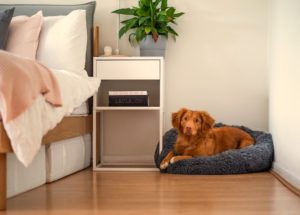
How to care for laminate flooring?
Laminate flooring should be cleaned with a broom or vacuum. Water or liquid spills should immediately be cleaned since they can cause irreparable damage to the floor. It should be cleaned only with the cleaners and solutions created exclusively for laminate floors.
What laminate flooring is best for the bathroom?
Water-resistant laminate is a good option for bathrooms if you take precautions to protect its wood base from moisture. Engage professional laminate flooring installation services so that there are no seams between planks to make it difficult for the moisture to trickle down.
What is engineered hardwood floor vs laminate?
Engineered hardwood floor is made up of several layers of high-quality plywood that is glued together at high temperatures to create a thick, secure, and durable sheet with a veneer of fine hardwood as its top layer.
Laminate, on the other hand, is a relatively thin sheet of pressed wood with a photographic image of wood as the top layer. The top layer is further covered by a transparent wear layer for added protection.
Engage a Wood Flooring Professional
What laminate flooring is safest?
Prior to purchase, it is good to check with the suppliers if their materials contain toxic chemicals. Formaldehyde is a type of volatile organic compound that may have harmful effects on you and your family! It is good to ensure that the laminate flooring contains the “E1 Emission” grade, which means that the formaldehyde was not used in the processing and production of the laminate flooring.
Are laminate and vinyl flooring the same?
No, laminate is made from pressed wood with a clear wear layer at the top whereas vinyl is 100% synthetic and made of plastic.
What is better, hardwood or laminate?
It depends on your preferences and requirements. Hardwood is more durable, beautiful, and versatile but more expensive. In contrast, laminate is less durable and prone to damage, but it comes at a lower price.
Due to the ease and convenience in up-keeping the laminate floors, it is usually the go-to choice compared to having actual hardwood flooring. Not only does it mimic the visual aesthetic of hardwood, but a high skill set also is not required for installation.
Should I get vinyl or laminate floors?
Vinyl can withstand water better than laminate floors. So, it does not get damaged by moisture and water. Laminate has wood elements in it and would be affected by the presence of water and will be damaged. This makes the vinyl more durable than laminate. Hence, this would make vinyl floors more suitable for places such as kitchens and wash areas. Their prices are almost the same with luxury vinyl being slightly more expensive.
Ultimately, it depends on where in the house each type of material is used. Definitely, there are certain places in the house where laminate flooring would not be suitable due to the higher incidences of moisture. Hence, it is better for it to be used for dryer areas to create a warmer and more comfortable feel.
How often should you mop laminate floors?
Since laminate is not water-resistant, mopping with a damp cloth is not advised at all since it can cause irreparable damage to the floor. A damp mop should be used every two to three months on laminate floors so the damage could be minimized.
We’re here to improve your home
Speak to hundreds of reliable pros, view their gallery, inspirations, and know the best prices with our resources.
Have full control over your home improvement projects with Homees.



